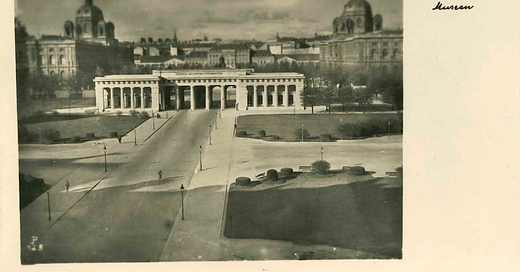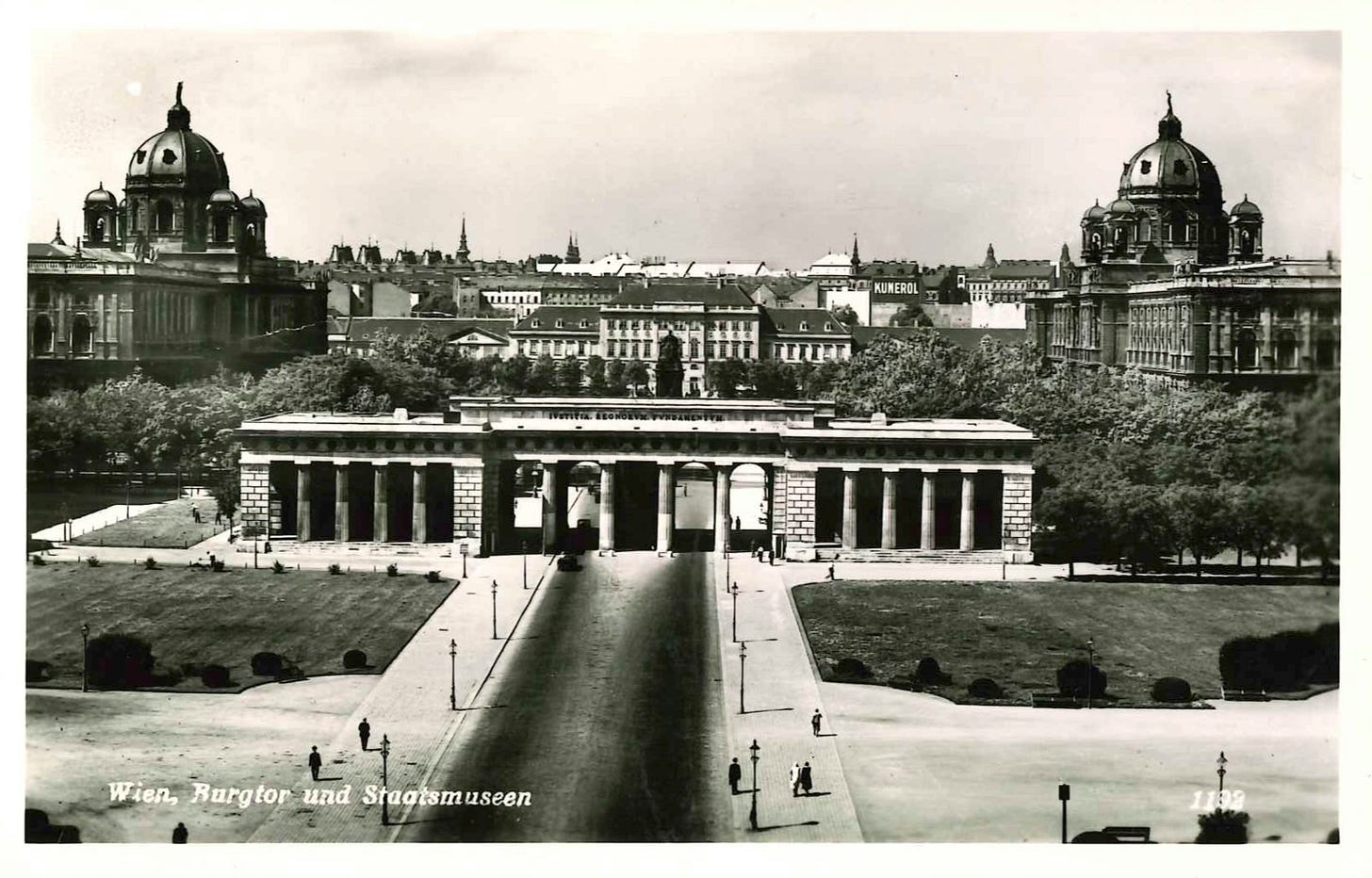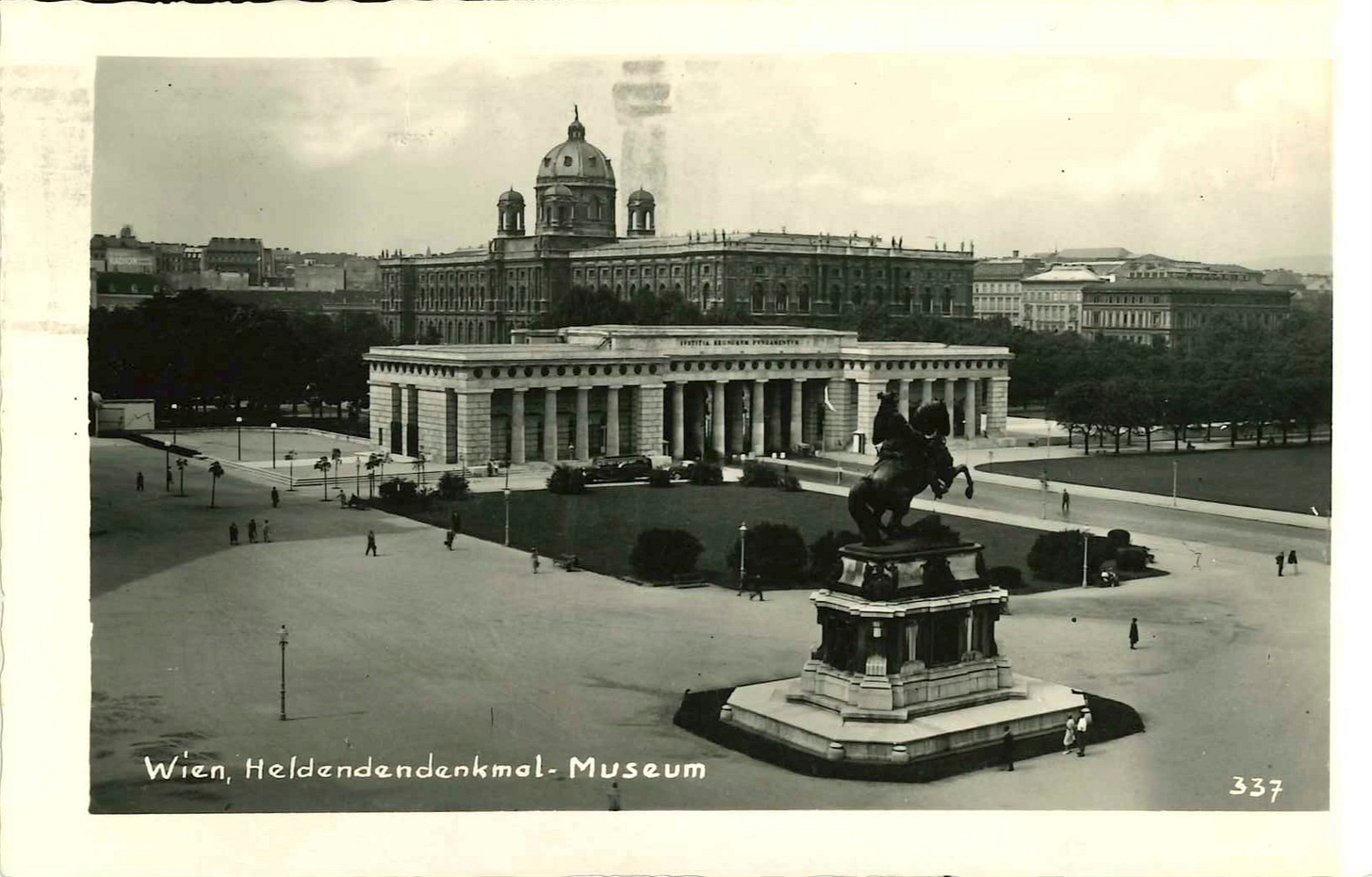'Justice is the Foundation of Rule'
There are few other monuments that encapsulate the past 200 years of Central Europe's eventful history in better ways than Vienna's Heldentor
These words, an English rendition of emperor Francis I’s motto—Iustitia regnorum fundamentum—are found on Vienna’s imposing Heldentor. Erected between 1821 and 1824 to commemorate the victory over Napoleon, it was ceremoniously inaugurated on the anniversary of the battle of Leipzig on 16 October 1824.
Envisioned to paper over the Austrian Empire’s repeated humiliations suffered during the Revolutionary and Napoleonic wars, the Heldentor is a quite strange monument: although it appears as if it was part of the city’s walls (which were demolished by the French in 1809), it is, rather, an enduring monument to continuity and change in around the turn of the nineteenth century.
Carved out of so-called Kaiserstein, a particularly strong kind of limestone quarried in the so-called Kaisersteinbruch (the emperor’s quarry) some forty kilometres southeast of Vienna, the monument speaks to the shifting tides of history. From 1797 through 1806, Francis of Habsburg oversaw the dismantling of the Holy Roman Empire while, in 1804, he assumed the hereditary title of an Austrian Emperor. Put succinctly, while the former was one of Europe’s oldest polities that doubled as earthly manifestation of universal Christendom, Francis’ new style and title came about by virtue of a man-made declaration steeped in bureaucratic-legalistic shenanigans.
In this sense, the Heldentor’s function (sic) and Francis’ motto speak volumes: the former mimics a defensive structure while the latter begs the question: “whose justice?”
The above postcard was sent on 15 February 1949 and it shows the Heldentor and the two main museums across Vienna’s Ringstraße, the Museum of Art History (Kunsthistorisches Museum) on the left and the Museum of Natural History (Naturhistorisches Museum) on the right.
Whose Justice?
Neither the available evidence nor later scholarship, however, provide straightforward or unambiguous answers, and there exists perhaps no better example of these ambiguities than the Heldentor. The site eventually became one of republican Austria’s most important lieu de mémoire, yet its subsequent history is very much illustrative of what Giovanni Levi called “the fragmentation, contradictions, and plurality of viewpoints” that characterise the history of Central Europe over the past two centuries.
A memorial to the soldiers of the Great War was constructed in 1915-16.
In 1934, the fascist Austrian government added a Tomb of the Unknown Soldier (to which the artist Rudolf Wondracek added pro-Hitler pamphlets discovered in 2012).
After the Anschluss, Adolf Hitler and Hermann Göring, both veterans of the Great War, paid their respects to the fallen and a memorial dedicated to the SA was added (which was removed in 1945).
In the mid-1960s, the Austrian government added yet another memorial dedicated to “those who gave their lives for Austria’s freedom”.
Later additions to the site include a steel cross under which John Paul II celebrated a mass on the occasion of the 300-year anniversary of the Battle of Vienna (12 September 1683), to say nothing about Thomas Bernhard’s drama Heldenplatz, first staged to great controversy in 1988.
In 2002, a cenotaph in memory of police officers killed in the line of duty was added.
Adapted after Gedächtnisort der Republik, eds. Dieter A. Binder, Ulrich Hufschmid, and Heidemarie Uhl (Göttingen, 2021).
For the concept of lieux de mémoire, see Pierre Nora, Les lieux de mémoire, 7 vols. (Paris, 1984-1992); Realms of Memory: The Construction of the French Past, trans. Arthur Goldhammer, 3 vols. (New York, 1996-1998).
More Postcards of the Heldentor
The above postcard was mailed in 1944, as the below-reproduced reverse shows (although the “canonical” viewpoint remained identical after 1945):
Vienna, 26 Dec. 1944
My dears, may the love of the heavenly child and his holy mother be with you on these Merry, blessed Christmas and a happy, hopefully peace-bringing New Year.
Yours, faithfully, P.A.
The above postcard with the Natural History Museum in the background and Eugene of Savoy in the foreground was mailed in 1938.
Finally, an image from the other side of the Ringstraße—in fact, it was taken from the Natural History Museum’s roof and shows the entire ensemble of the Heldenplatz. That last postcard was never mailed, although I think it is from the 1950s.









I'd like to visit Wien for a few days to see the architecture, museums, and delight in the coffee and cakes.
So all of those monuments are within the walls and pillars of the Heldentor?